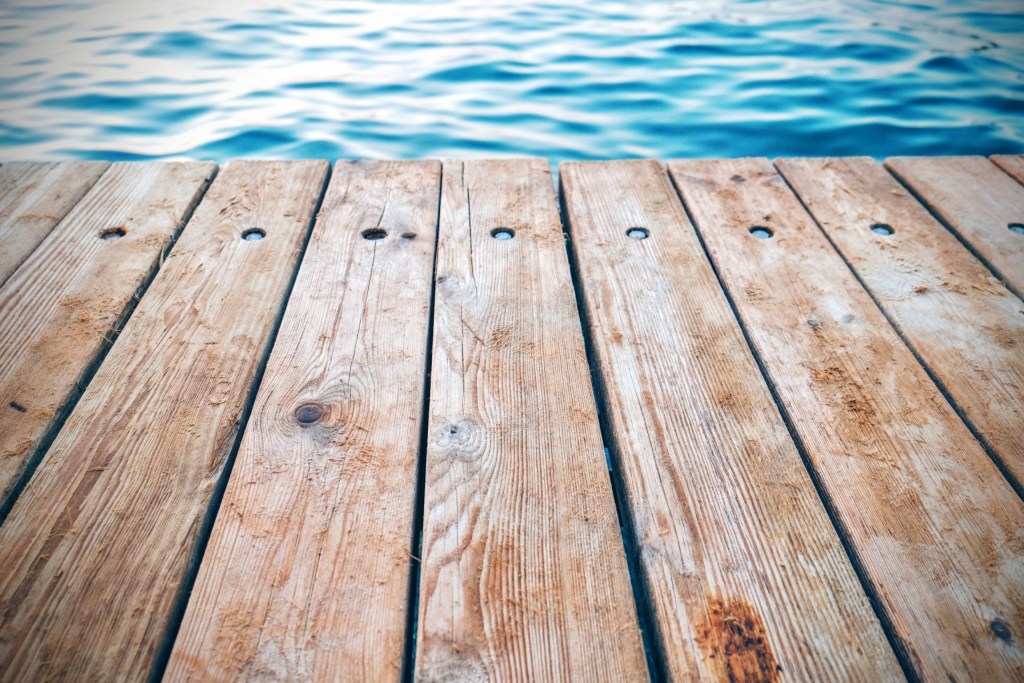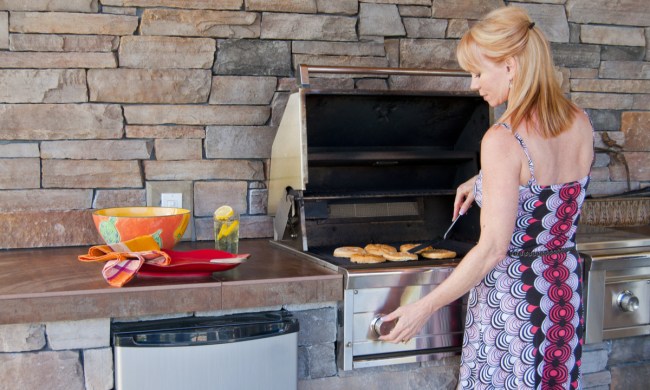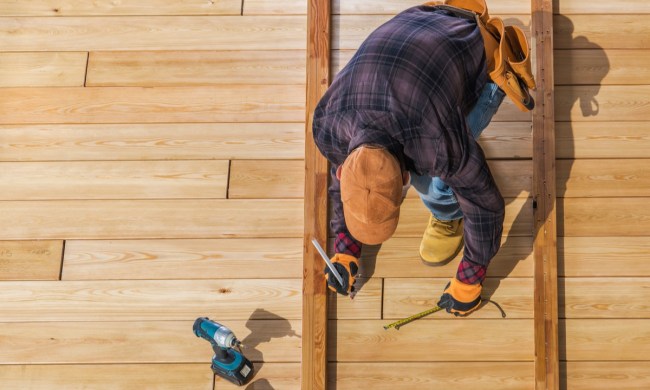You probably already know what a freestanding deck is; otherwise, you wouldn’t be reading this article right now. However, for those of you who landed here out of curiosity, allow us to bring you into the loop.
A freestanding deck is a deck structure that’s self-supporting and is not attached to any structure. Also known as “floating decks,” they’re built apart from the house wall and are considered much easier to construct than a standard deck (which is usually attached to your house). Additionally, freestanding decks usually don’t require a building permit.
To give you a better picture of what we are talking about, consider the following. Many decks built around above-ground pools are built in a freestanding manner. Other freestanding decks might be built way out in the yard somewhere and can be used for a variety of purposes. We’ll go over how to build a freestanding deck step by step and leave where you choose to build it up to you.

How to prepare
While we mentioned above that you don’t need a building permit most of the time when constructing stand-alone decks, that’s not always the case. You should do some due diligence and check out the building codes and permits you might be required to obtain in your community.
Remember that some places demand a construction permit regardless, while others don’t require one if the structure isn’t attached to your house. Additionally, if your freestanding deck will be temporary, you probably won’t need a permit. However, it’s best to check just to be on the safe side.
Choose your building location
Once you decide where you want to set your stand-alone deck, you need to decide how you want to place it. Ideally, your freestanding deck should be placed on a bed of gravel, but you can also safely place one directly on the ground. Building on a gravel bed helps keep the wood used to construct the deck above the earth. By putting a gravel barrier between the wood and the ground, you’ll help the wood stay dry and last longer.
You could also raise the deck off the ground by using concrete blocks to support it. Just for your information, you could choose to use regular concrete blocks that don’t have holes, or you could spend some extra cash for blocks that are designed specifically for building freestanding decks.
Think about size, style, and shape
Before you decide to go all out, spending boatloads of cash on your freestanding deck project, you need to consider your carpentry skills. Do you have the know-how? If you plan to do everything yourself without hiring outside help, it would be best to keep your designs relatively simple. That’s especially true if you’re a beginner.
You may wish to limit the shape of your deck to either a rectangle or square. Additionally, it would be best if you constructed it low to the ground. If you have a bit more experience, then you may choose to expand your horizons a little and consider add-ons like a trellis or some type of roof. Remember that you’ll need to measure the space where you plan to put your deck and then calculate the amount of materials you’ll need to construct it.
General materials you’ll need to begin
Since every deck will be different, the size, shape, and overall complexity of the design will determine the specific quantities of materials you’ll need. First, of course, is wood. There are a few different types of wood that you could use to build stand-alone decks. These are (from cheapest to most expensive):
- Pressure-treated lumber
- Southern yellow pine (SYP)
- Cedar
- Redwood
- Composite decking
Just about everything after the pressure-treated lumber is used for the sake of appearance. If your only concern is durability, we recommend going for the pressure-treated lumber.
These are some other materials you might need to have on hand. While this list isn’t comprehensive, it should give you an idea of what you’ll need to start:
- Concrete pier blocks
- Pressure-treated posts
- Composite decking planks
- Joist hangers
- Carriage bolts and matching sized washers and nuts
- Shovel
- Rake
- Tape measure
- Carpenter’s level
- Circular saw
- Drill and drill bits

Prepare the ground
Wherever you’ve chosen to build your freestanding deck, you’ll need to clear the ground. You’ll need to remove the grass and any other material and ensure the land is level and flat. You can do that by raking it and then stomping the earth with your feet or a tamping tool. As noted above, ideally, you’ll put down a layer of gravel between the wood and the earth. Besides helping to prevent the wood from moisture, this will also help prevent weeds from growing.
Steps to construct your freestanding deck
- If you’re using concrete blocks, then you’ll need to lay these first.
- Begin building the outer frame.
- Position and square the frame.
- Make sure the deck frame is level.
- Install the deck boards.
And there you have it – everything you need to get started on your ultimate freestanding deck-building project. We’ve given you all the tools you need, so go forth and build something brilliant. We believe in you!


